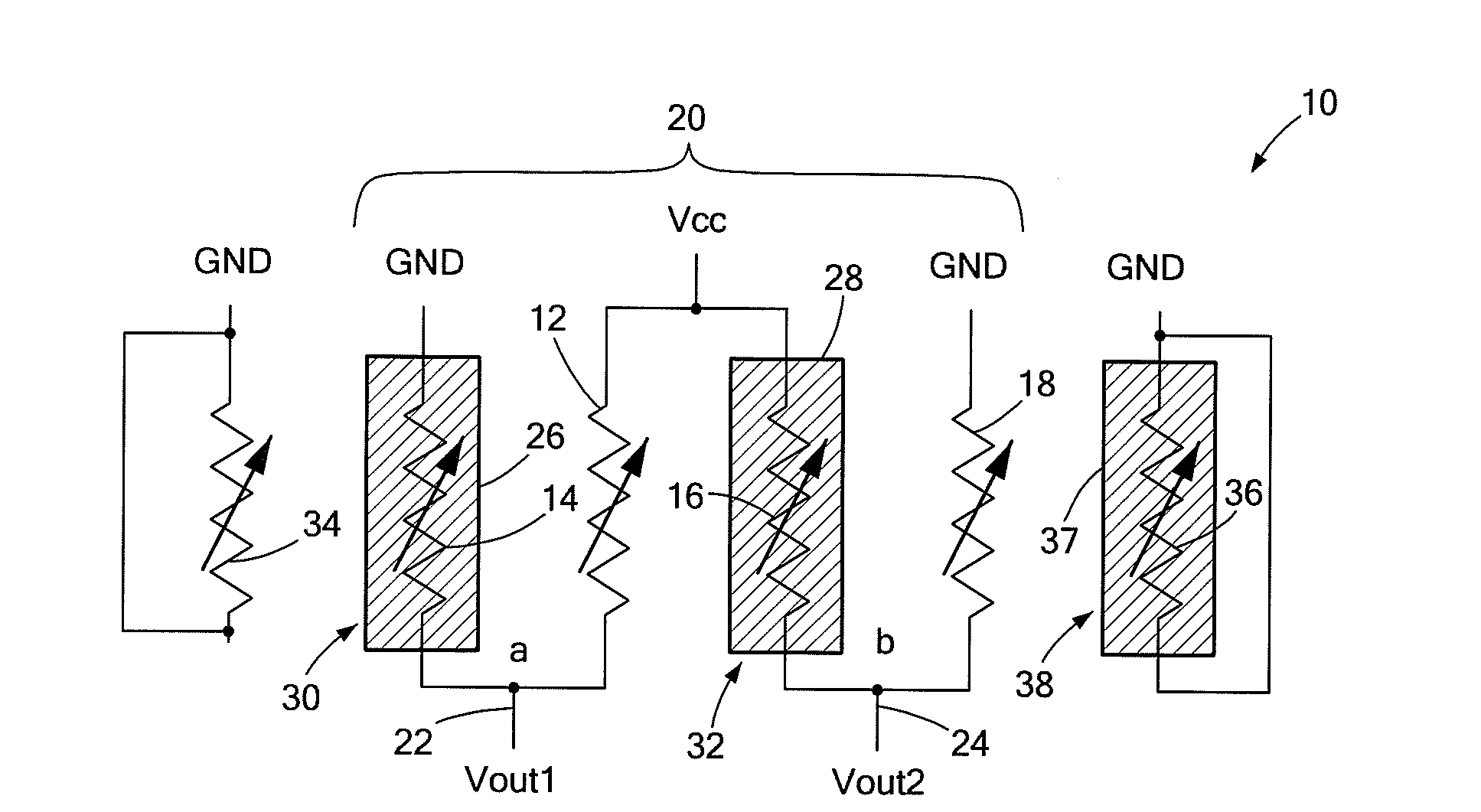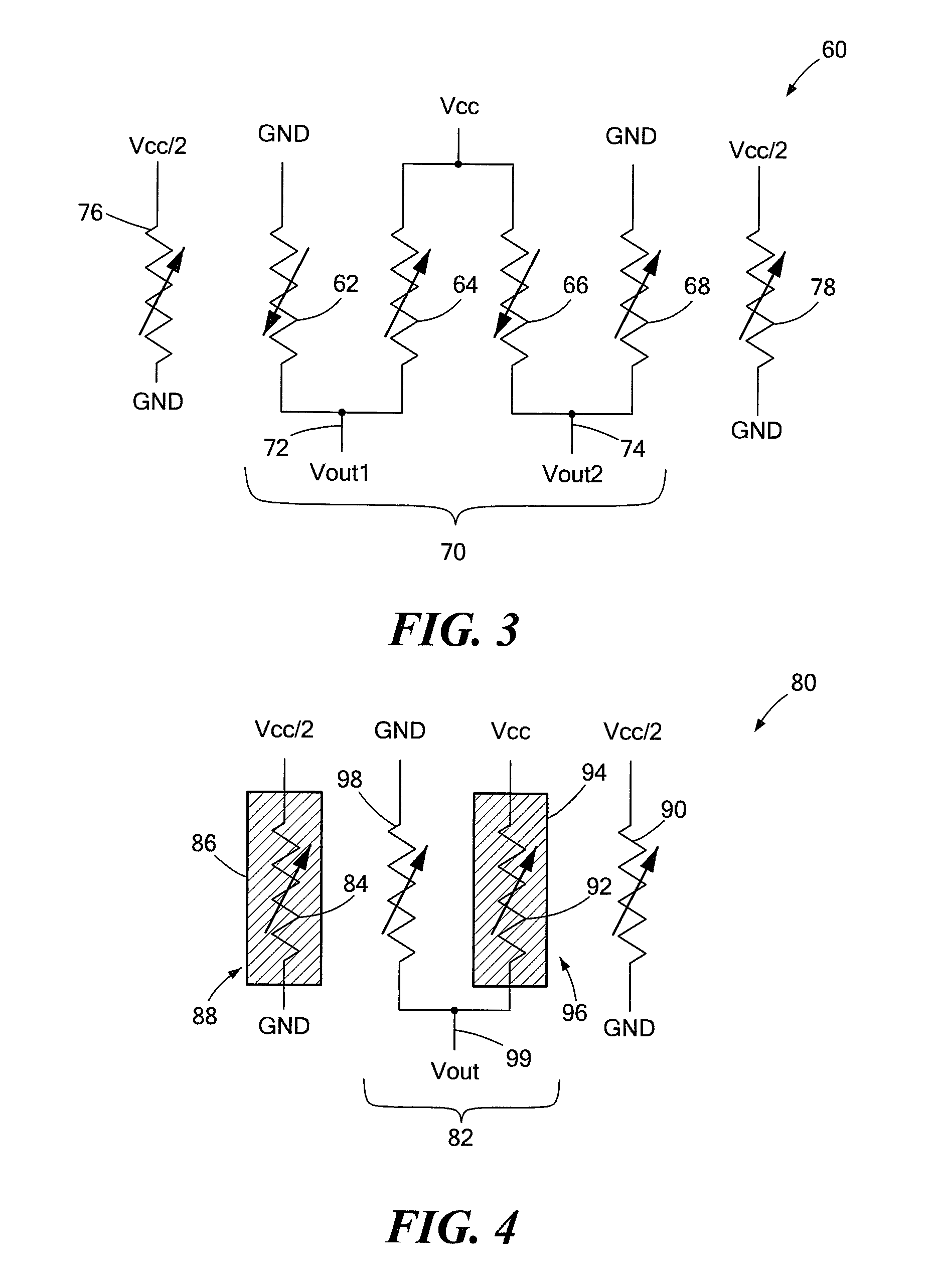Matching of gmr sensors in a bridge
a technology of gmr sensors and bridges, applied in the field of magnetic field sensors, can solve the problems of poor layout and non-informalities in the fabrication process and operating environment, the variation of geometrical shapes, and the inability to meet the needs of the user, so as to reduce the variation caused by the closest neighbor
- Summary
- Abstract
- Description
- Claims
- Application Information
AI Technical Summary
Benefits of technology
Problems solved by technology
Method used
Image
Examples
Embodiment Construction
[0019]Resistor mismatch can be a serious problem in the design of resistive bridge circuits that require resistors in the bridge to have the same value. This is especially true in the case of bridge circuits used in magnetoresistive (MR) sensors. An MR sensor is a magnetic field sensor that makes use of the MR effect, the property of a current carrying material to change its resistance in the presence of an external magnetic field. The MR type resistors or “magnetoresistors” of the sensor's bridge circuit, referred to herein as MR elements, are very sensitive to the stray magnetic field effects of neighboring MR elements. Neighboring interactions can result in variations in an MR element's electrical behavior. Any variation, however small, can limit sensitivity and overall accuracy of the MR sensor. The circuits of an MR sensor, like other types of circuits, are also affected by non-uniformities introduced by a particular process during device fabrication. Often the processing-relat...
PUM
 Login to View More
Login to View More Abstract
Description
Claims
Application Information
 Login to View More
Login to View More - R&D
- Intellectual Property
- Life Sciences
- Materials
- Tech Scout
- Unparalleled Data Quality
- Higher Quality Content
- 60% Fewer Hallucinations
Browse by: Latest US Patents, China's latest patents, Technical Efficacy Thesaurus, Application Domain, Technology Topic, Popular Technical Reports.
© 2025 PatSnap. All rights reserved.Legal|Privacy policy|Modern Slavery Act Transparency Statement|Sitemap|About US| Contact US: help@patsnap.com



